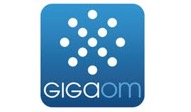GigaOM: Is Cisco stacking the deck with its mobile data numbers?
To hear Cisco tell it, the world is quickly running out of wireless spectrum. Tim Farrar, of TMF associates, says a look at the numbers shows that Cisco first overstated them, then revised them, and is now overstating them again.
The Cisco mobile VNI forecast (the shorthand for Visual Networking Index: Global Mobile Data Forecast) is widely used as a justification for specific amounts of new mobile spectrum.
For example on p. 76 of the National Broadband Report it says,
According to Cisco, North American wireless networks carried approximately 17 petabytes per month in 2009,7 an amount of data equivalent to 1,700 Libraries of Congress. By 2014, Cisco projects wireless networks in North America will carry some 740 petabytes per month, a greater than 40-fold increase.
A search on “Cisco” in this report gives 50 uses, although some are duplicates involving their URL.
In a recent FCC filing a few days before the GogaOM post CTIA said
These findings by CTIA bear out the numerous expert projections regarding mobile data traffic:
-Cisco’s Visual Networking Index (“VNI”) projects wireless data traffic in 2016 will be 16 times the volume of traffic in 2011, and 100 times the volume of traffic in 2009.9 This projection involves traffic on licensed spectrum alone, taking into account the off-load of other wireless traffic onto unlicensed spectrum. Thus, Cisco’s VNI projections demonstrate the pressure solely on licensed spectrum.
The GigaOM post points out discrepancies between Cisco’s projections and CTIA’s own reporting of actual traffic:
Nevertheless, at least in the U.S. we can attempt to validate Cisco’s numbers, given that CTIA’s mobile data traffic statistics are based on direct reporting by carriers accounting for 97 percent of wireless connections in the U.S.. In its latest forecast, Cisco estimates that mobile data traffic in the U.S. was 128PB/month in December 2011, and increased to 207PB/month by December 2012.
However, CTIA data indicates that 633PB were carried in the first six months of 2012, for an average of 105.5PB each month. Cisco’s estimate for the U.S. is clearly inconsistent with the CTIA statistics: It is hardly likely that monthly traffic declined significantly between December 2011 and June 2012, and equally implausible that total mobile data traffic in the U.S. then doubled in the second half of the year.
Now spectrum needs are different than traffic projections. Spectrum needs depend critically on infrastructure buildout and technology used. There is not a fixed conversion factor from petabytes to MHz.
A key issue for the cellular industry is which is more cost-effective: acquiring additional spectrum or building out infrastructure to the maximum possible. Of course, acquiring spectrum is a good way to assure long term market hegemony for a given carrier, something mere infrastructure buildout does not assure.




![Validate my RSS feed [Valid RSS]](valid-rss-rogers.png)

